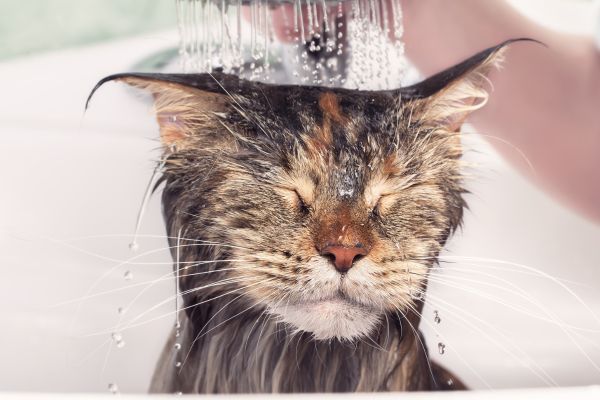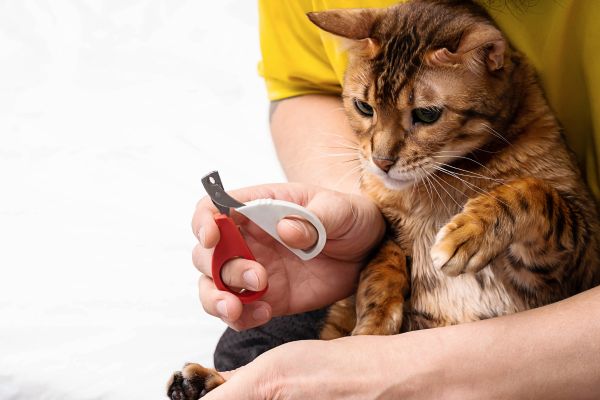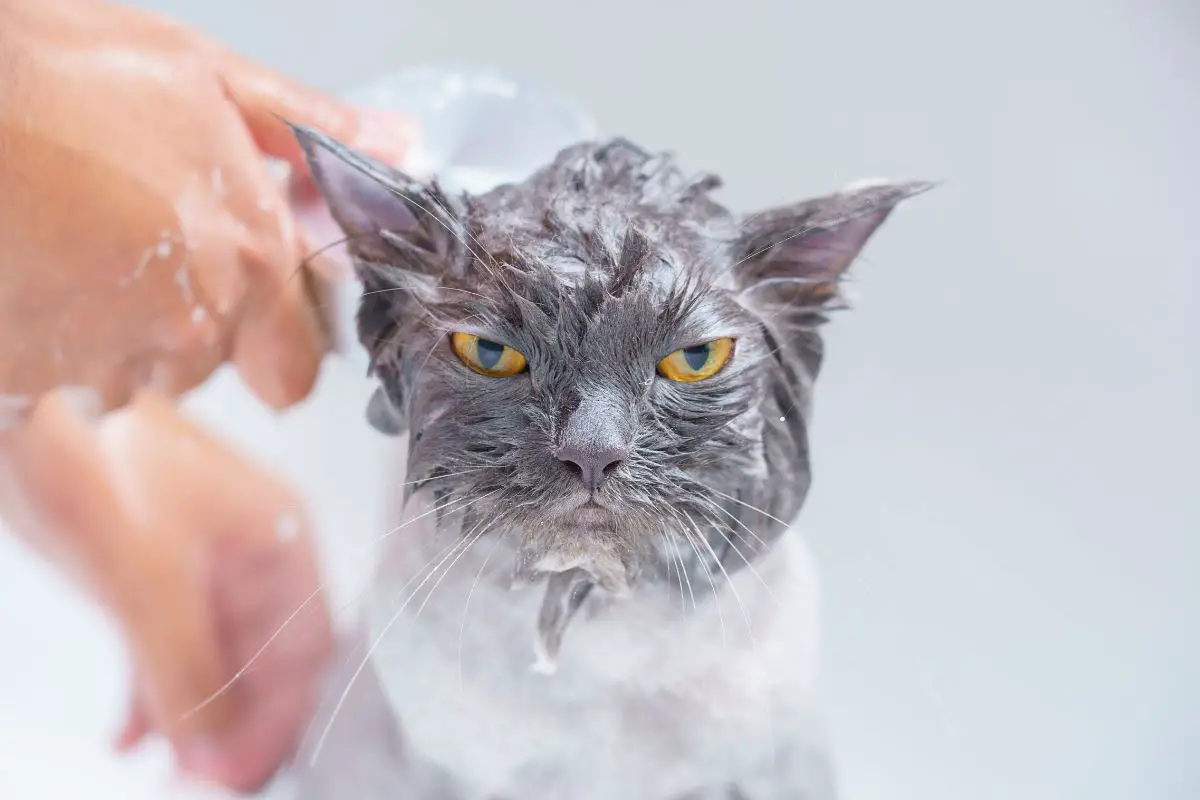As a cat owner, you want to ensure the health and happiness of your feline friend. Although felines typically take care of themselves when it comes to cleanliness, there are always exceptions. But how often should you wash your indoor cat? Do you think it’s necessary to give them a bath?
In this article, we’ll discuss cat hygiene so you can learn how to keep your indoor cat healthy and happy.
How often should you wash your indoor cat?

The choice of how often you should bathe your indoor cat should be determined by their specific requirements and the conditions of their environment. If your cat is clean, happy, and in good health, there is probably no need to bathe them more frequently than once or twice a year.
Key Takeaways:
- You should only bathe cats if they have a skin condition, got into something dirty, or both.
- Your cat may experience traumatic effects from too many baths.
- When bathing your cat, there are a few things to keep in mind, such as using warm water and avoiding putting soap on the cat’s head.
Are you supposed to bathe indoor cats?
The frequency with which you should wash your indoor cat will be determined by several factors, including the cat’s usual grooming routine and the conditions in which it lives. If your pet spends most of its time inside and only occasionally goes outside, you won’t have to worry as much about it picking up parasites or getting dirty.
Therefore, it’s possible that indoor cats don’t require as many baths as outdoor cats. In fact, giving your feline too many baths can change its behavior. Cats are very careful about grooming themselves, and if their natural oils are taken away too often, they may feel stressed.
Reasons why your cat needs a bath

Your indoor cat may require a bath for one or both of the following reasons:
- Your cat has gotten into something dirty or smelly: If your furry friend has accidentally been outside and gotten into dirt, mud, or any other substance that could be harmful or smelly, then it’s possible that it‘s time for a bath. This is especially important if your cat has a long or thick coat that can trap dirt and other things.
- Your cat has a skin condition or is infested with parasites: If your cat has a skin condition or is infested with fleas, ticks, or other types of parasites, your veterinarian may recommend giving your pet frequent baths using specialized medicated shampoos to help manage the condition. Regular baths can help soothe your cat’s irritated skin and get rid of any bugs that might be making him uncomfortable or hurting him.
How to bathe an indoor cat

1. Make sure you have everything ready ahead of time
Before you begin, check that everything you require is within easy reach. This includes a shampoo that’s designed specifically for cats, a pitcher or handheld showerhead, towels, and a grooming brush.
2. Brush their fur before the bath
This helps remove any dirt or debris on the fur, making the washing process more effective.
3. Make use of warm water
Before bringing your furry pet into the bathroom, filling the tub with warm water is essential. Since cats are sensitive to changes in temperature, it’s essential to ensure that the water is neither too hot nor too cold. Your pet may find that soaking in warm water helps them relax, making the process easier on them.
4. Have treats on hand
Having treats on hand to give to your feline as a reward for behaving well while getting washed can help to make the experience more positive for your pet, which can help them to associate getting washed with something positive in the future.
5. Avoid putting soap on your cat’s head
When washing a cat, one of the most important rules to follow is to only put a small amount of cat shampoo on the dirty area you want to clean and to avoid putting soap on your cat’s head, neck, underside, and tail, as these areas are sensitive and can easily become irritated. You can remove dirt and debris from your cat’s face by gently wiping it with a damp towel or cloth.
6. Rinse your cat and dry them using a towel
Rinse them thoroughly to remove the shampoo and ensure their fur is clean. When you’re done rinsing your cat, pat it dry with a soft towel. Even though it seems like a good idea to use a hair dryer to speed up the process, your furry friend might find the sound very frightening.
Tips for washing a cat

1. Timing is everything
Choosing the right time to wash your feline is one of the most important things you can do to ensure the process goes as smoothly as possible. If your cat is already experiencing anxiety or stress, it’s best to wait to give them a bath until after they have calmed down.
Choosing a time when your cat isn’t likely to be very active or playful is also important. Because of this, it’ll be much less likely for them to become anxious or easily irritated while they’re in the tub.
2. Trim your cat’s nails

It’s a good idea to trim your cat’s nails before giving it a bath for several reasons, including that it can help prevent scratches and keep you and your feline from having a painful and stressful bath.
3. Be patient and calm throughout the process
Cats are known to be sensitive to new experiences, and the feeling of being wet can be especially disturbing for them. You can help your furry friend feel more at ease and make the experience less stressful for both of you by maintaining your calmness and showing patience throughout the process.
4. Hire an expert
If your pet really does need to be washed but is both anxious and resistant to the idea, it may be best to seek the assistance of a professional groomer or veterinarian. Groomers and vets have worked with cats before and can make the process easier for you and your furry friend.
Is it okay to never bathe your cat?
Most healthy adult cats with short hair don’t need to be given a bath regularly and are experts in staying clean. In fact, cats don’t like it when water gets on their fur because it feels heavy and is something they don’t want on their coat.
But there are times when your pet might need a bath, like if it gets into something really dirty or sticky. In general, it’s okay to never give your feline a bath.
Final Thoughts
Washing your indoor cat isn’t always necessary since most healthy adult cats with short hair can clean themselves. If a bath is absolutely necessary, remember to use mild products designed for cats and ensure your pet is completely comfortable the entire time.

